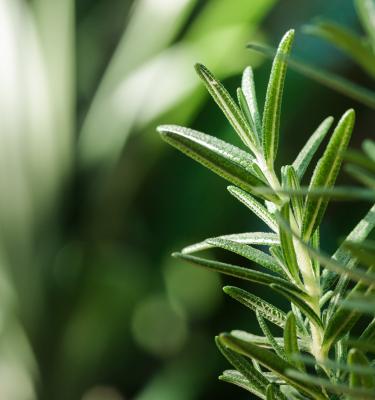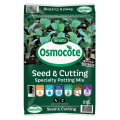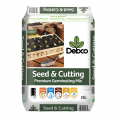

How To Grow A Rosemary Plant
Rosemary is a hardy, evergreen shrub loved for its highly fragrant foliage. Like the climate in the Mediterranean where it originates from, rosemary loves to grow in areas with hot dry summers, and mild winters. Rosemary plants can struggle to thrive in subtropical and tropical climates because of the high rainfall and humidity.
Rosemary bushes can grow up to 1-2m tall, but there are more compact varieties and even ones with a prostrate growth habit - that looks amazing spilling over the side of garden beds or rockeries. Tiny flowers in blue, white or even pink appear all over rosemary plants from late winter and continue throughout summer. These nectar-rich flowers are a magnet for bees and beneficial insects.
Top 4 steps to growing rosemary plants
- When growing rosemary, choose a full sun spot in your garden or grow in pots
- Rosemary needs free draining soil that is never waterlogged
- Harvest rosemary sprigs when you need them
- Rosemary can be pruned to shape after flowering
Shopping List
- Rosemary seedlings or potted plants
- Scotts Performance Natural Organic Based Soil Improver
- Scotts Performance Natural All Purpose Organic Based Fertiliser
- If growing in pots, Scotts Osmocote Performance Naturals Organic Based Potting Mix
- Garden trowel
Prepare
Rosemary is most commonly grown from seedlings or established potted plants. Choose a full sun spot that receives at least 6 hours of sun each day and make sure the soil is free-draining. Rosemary hates waterlogged soil, so if your soil struggles with this, rosemary growing in pots or a raised bed is a great option.
Dig the hole twice as wide as the original nursery pot and at the same depth. Mix a small amount of Scotts Performance Natural Organic Based Soil Improver through the original soil at the base of the planting hole.
Planting rosemary in the garden
As the mature height and width of rosemary plants will vary between varieties, always follow the recommended spacings on the label when deciding where to plant rosemary.
Although rosemary can tolerate drier soil, plants will appreciate deep watering in extremely dry and hot periods.
In summer add a light layer of mulch around rosemary plants to retain moisture.
Growing rosemary from seeds
Rosemary is not typically grown from seeds as germination is very slow. Although it is easy and quick to grow rosemary from cuttings using the following tips.
How to grow rosemary from cutting
Rosemary strikes easily from cuttings.
- To grow rosemary from cuttings, take semi-hardwood tip cuttings around 10-15cm long from an established rosemary bush - ideally in spring or summer.
- Either place these cuttings in a glass of water on a sunny windowsill to develop roots (before planting into small pots) OR dip the cut end of each cutting into honey or rooting gel and plant into pots filled with Scotts Osmocote Seed & Cutting Mix. Leave this pot in a warm and sunny spot, keeping the soil moist while roots establish. Once new leaf growth and roots are visible on the cuttings they can be transplanted into larger pots or your garden.
How to plant rosemary in a pot
Rosemary can be grown in medium to large pots, with plenty of drainage holes, that are a minimum of 30cm deep by the same width. Fill the pot with Scotts Osmocote Performance Naturals Organic Based Potting Mix, before removing the rosemary plant from its nursery pot (tease the roots if needed) and planting into the prepared potting mix. Backfill around the root ball and water in well.
In summer add a light layer of open organic mulch to retain moisture during the cooler months.
Harvest & Maintenance
Harvest rosemary ‘sprigs’ or stems when you need them - cutting them off using sharp scissors or secateurs. Regular harvesting will help keep the plant compact and neat.
After flowering prune rosemary plants to shape them if you’d like. Use hedging shears to give the plant an overall cut back by no more than a quarter. If you cut too hard into the old growth with no foliage on it you may kill the plant.
Rosemary doesn’t need a lot of fertiliser, but will benefit from a dose of Scotts Performance Natural All Purpose Organic Based Fertiliser in spring.

Pests & Diseases
Rosemary is rarely attacked by pests or diseases. The biggest problems may occur if the plants don’t have enough sunlight, the soil is waterlogged or the climate is too humid.
Make sure rosemary is grown in areas with good drainage and full sun. Making sure the plants have good airflow around them and avoiding overhead watering can help reduce the risk of fungal problems caused by high humidity.



